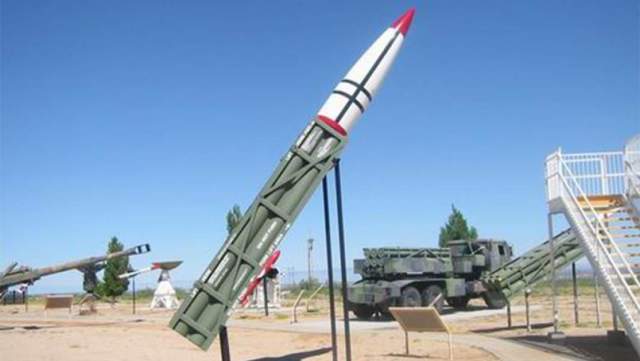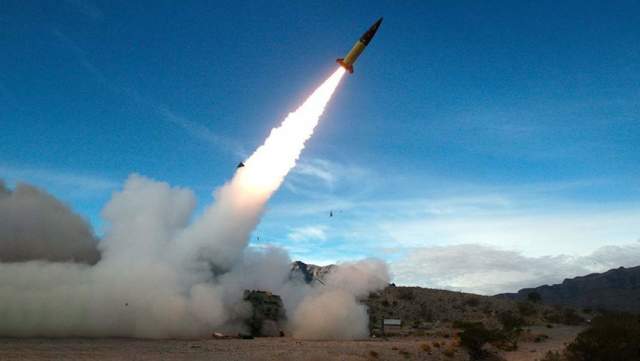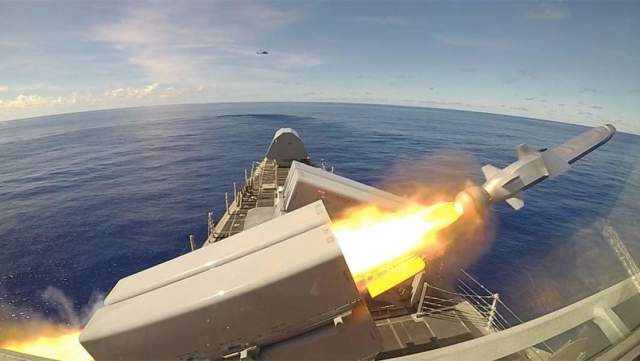And how can they affect the course of a special military operation
At the end of June, the American edition of the Wall Street Journal, citing its sources, reported that the United States is close to making a decision on the supply of ATACMS missiles to Ukraine. Literally next, the Pentagon said that the agency had no information about making such a decision. At the same time, news came from Poland about the planned deliveries of the latest NSM missiles to Kiev. Izvestia worked out together with military expert Dmitry Kornev, founder of the Military Russia portal, how these munitions can affect the situation in the zone of a special military operation and what countermeasures the Russian armed forces need to take.
ATACMS
The MGM-140 ATACMS tactical ballistic missile, depending on the modification, has a range of 160 to 300 km, with different types of combat units. Today, these are some of the most powerful Western long-range non-nuclear missiles, and they are used by HIMARS and MLRS mobile complexes, which are already in service with the Armed Forces of Ukraine.
ATACMS are placed in the same unified transport and launch container as GMLRS missiles. Only GMLRS in such a container are six pieces, and ATACMS is one. That is, it turns out that one HIMARS installation launches one ATACMS missile, and MLRS launches two. A noticeable advantage of these complexes over many "classmates" is that the launcher replaces the shot cassette with a loaded one on its own, without involving additional equipment, and very quickly — no more than five minutes.
In the ATACMS family, various missiles have been launched by the American industry, but probably several modifications will be supplied to Ukraine, which are in warehouses in "commodity volumes". The most massive ammunition of the M39 Block-1 model is equipped with a heavy 500-kg cluster warhead, which contains 950 M74 combat elements. They have a range of 165 km.

MGM-140 ATACMS Rocket
Image Source: Photo: Commons.wikimedia.org/U.S . Army/White Sands Missile Range Museum
Long-range missiles of the M57 model deliver a high-explosive fragmentation warhead weighing 227 kg to a range of up to 300 km. They have a noise-proof inertial guidance system with satellite correction. They are used for targets with known coordinates — ground objects, locations of personnel, equipment, transport hubs, headquarters and similar purposes.
All this is provided that intelligence works effectively, since the tactics of using HIMARS-type systems are similar to cavalry attacks: launchers receive information about targets from intelligence, moved to a strike position, shot back and went to recharge. At this time, intelligence is preparing new targets for the next strike. Installations can receive information about targets literally in real time, being "in the field".
Until now, American officials have categorically ruled out the supply of ATACMS missiles to the APU, since they can technically be used by the APU against targets on the territory of the Russian Federation beyond the borders until 2022. The United States believed that this could cause an unnecessary escalation of the conflict and bring it to a new height. Perhaps something has changed in Washington, and the rhetoric of immediate and unlimited assistance to the Armed Forces of Ukraine is getting louder.

MGM-140 ATACMS Ballistic Missile Launch
Image Source: Photo: AP Photo/U.S. Army/John Hamilton
It is likely that these conversations are connected with the unsuccessful development of the Ukrainian counteroffensive. Zelensky demands help — new ammunition, tanks, planes and ATACMS. And, judging by the latest news, the United States is ready to resolve the issue of their supply.
Will our air defense forces be able to shoot down ATACMS? Sure. Yes, this is not an easy goal, and only medium and long—range complexes - Buki, S-300 and, of course, S-400 - will be able to work effectively on them. Probably, these air defense kits will need to cover all important objects more tightly — warehouses, headquarters, transport hubs. Of course, it will be necessary to provide protection from the air of the Crimean Bridge, since it will almost certainly be able to become a target for these missiles — from the area of Zaporozhye, this transport facility becomes available for ammunition of this class. And of course, our Aerospace Forces will need to hunt for logistics and warehouses with ATACMS on the territory of Ukraine. It is possible that plans for conducting relevant operations will be prepared in advance — while these munitions are coming from overseas.
NSM
The second news concerns negotiations between Warsaw and Kiev on the supply of coastal defense complexes NSM-CDS with NSM missiles with a range of up to 250 km. Norwegian anti-ship NSM (Naval strike missile) is now considered one of the most effective and is popular with customers from NATO countries. The United States buys more than 1 thousand of such ammunition for its naval forces. Poland has adopted them literally just now and in small quantities so far — the total supply contract is limited to 48 copies.
An option with ground-based mobile launchers is being discussed for delivery to Ukraine. Probably, missiles of this type will be placed on the southern section of the SVO, and their targets may primarily be ships of the Black Sea Fleet. There is information that the munition can also hit visually contrasting ground targets. It is unlikely to be effective against such strong objects as bridges or protected concrete bunkers, but they can be used against ordinary buildings and warehouses.

Launch of a naval strike missile (NSM) during an exercise
Image Source: Photo: Global Look Press/US Navy
The mass of the NSM is slightly more than 400 kg, the mass of the warhead is 125 kg. The rocket flies at subsonic speed and is equipped with a modern infrared homing head, which keeps silhouettes of dozens of targets in its memory. It can independently determine the desired point according to a certain algorithm. The NSM body is made using radar visibility reduction technologies, and it looks similar to the English Storm Shadow, but has slightly smaller dimensions, and therefore will be a more difficult target for air defense systems. But our Storm Shadow sams have already learned how to shoot down and work on them quite effectively. And our air defenses will also find their own approach to NSM missiles.
How will the delivery of such systems take place and at whose expense? Poland is unlikely to be ready to give these products to Ukraine. They will be bought by the Ukrainian Armed Forces either at the expense of the Ukrainian budget, or the funds of the European Union, which are allocated to support the Ukrainian army, will be used. And if the issue of ATACMS missiles in the United States is still open, then Polish NSM will be delivered to Ukraine with a high degree of probability in the next few months.
Dmitry Kornev

